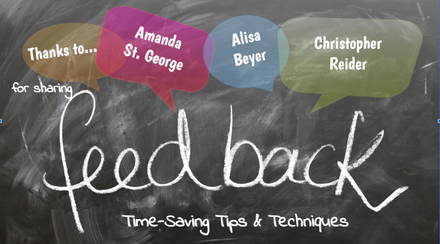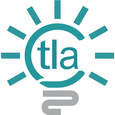|
Feedback is any type of response to student work with the purpose of improving learning and performance. To be useful, meaningful, and effective, feedback needs to be timely (or fast). The sooner students get assignments back and learn how they can improve, the better. Feedback should be constructive, a positive learning experience providing direction and guidance with the ultimate goal to help students rise to the next level and inspire an, "I can do this!" attitude. Tip #1 Goal focused, not grade focused Not ALL feedback should be paired with a grade. Align student feedback with assignment goals and keep feedback precise. Help the student to understand HOW they are doing in relation to the goal and WHERE to go next. Provide clear, concrete, specific examples for improvement. Tip #2 Not every assignment needs feedback
Tip #3 Sort papers into 3 Piles
Tip #4 "See Me"
Tip #5 SOC Method - submitted by Amanda St. George
When giving feedback, I find it important to use the Sandwich method.
Tip #6 Reading Quiz Feedback - submitted by Alisa Beyer
Tip #7 Utilize Rubrics or Checklists for Students to Self Evaluate PRIOR to Submission
Tip #8 Peer Editing and/or Writing Center Visit
Tip #9 Whole class "Hit List" Mini-Lesson
Tip #10 Create a Comment Bank
Bonus Tips! |
Categories
All
Author
Awesome people who want to help you do awesome stuff in the classroom! Join the conversation here or in our Facebook Group: CGCC Center for Teaching, Learning, and Assessment Archives
October 2023
|
TOPICS |
SUPPORT HoursMonday - Thursday
8am - 5pm Friday 8am - 4pm |
|
© Chandler-Gilbert Community College, 2020.



 RSS Feed
RSS Feed
